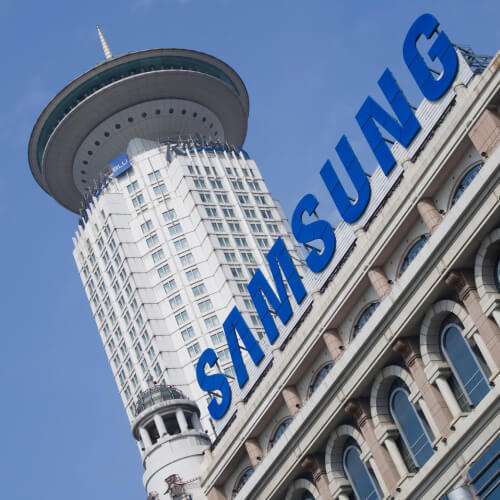Samsung suffers amid chips glut and gadgets downturn
The South Korean electronics giant has issued some of its most downbeat profit expectations in years.

It didn't take long for the chips shortage of the pandemic to be succeeded by a glut, forcing prices down after record spending on production. At the same time, consumers hit by a cost-of-living crisis seem less inclined to buy new gadgets. Research by Omdia, a sister company to Light Reading, shows that smartphone shipments fell 7.6% year-on-year for the recent third quarter, to about 301 million. Both trends explain why Samsung has emerged from the New Year festivities looking badly hungover.
The South Korean electronics giant today issued some of its most downbeat guidance in years. For the just-ended fourth quarter, it expects to have made about 70 trillion South Korean won in sales (US$55 billion), down from the KRW76.57 trillion ($60.2 billion) it reported a year earlier. But the real nasty is the figure published for operating profit. Having earned nearly KRW14 trillion ($11 billion) in the final quarter of 2021, Samsung expects to make just KRW4.3 trillion ($3.4 billion).
That is a troubling signal from an industry bellwether for other companies that produce chips or the gadgetry they power. Like other semiconductor makers, Samsung went into overdrive after the pandemic to supply industries that had been starved of components. Its balance sheet for the third quarter valued property, plant and equipment at about KRW160 trillion ($126 billion), 12% more than a year earlier. Samsung also had about KRW57.3 trillion ($45 billion) in inventories, a 52% increase.
Figure 1:  (Source: Chris Willson/Alamy Stock Photo)
(Source: Chris Willson/Alamy Stock Photo)
Experts now think spending cuts are due in a market seemingly knee-deep in chips. The sharp contraction in Samsung's operating margin – expected to shrink from about 18% in the third quarter to just 6% in the fourth – offers evidence of falling prices and higher costs. Demand is constrained partly because certain chip customers also amassed stock in 2021.
"An unintended consequence of this is a significant increase in inventory, meaning OEMs [original equipment makers] must continue to downgrade their shipments target for this year and reduce component purchases," said Zaker Li, a principal analyst at Omdia, when publishing data for third-quarter smartphone shipments last October.
On the smartphone side, the good news is that Samsung has continued to fare a lot better than most of its rivals. Its third-quarter shipments dropped only 7.4% year-on-year, to about 64 million units, according to Omdia's data. That compared with an 11.2% drop at Xiaomi, to 40.5 million, and an 18.9% fall at Oppo, to 29.1 million. Of the world's top six brands, only Apple performed better than Samsung, with shipments up 2.6%, to 52.2 million.
The China issue
But the chipmaking industry has not been helped by the tightening of US sanctions against China in the last couple of years. Rules prohibiting the sale of chips and chipmaking equipment to Chinese companies have squeezed demand just as investment activity floods the market with chips. The fear in the sector is that legislation designed to punish China will hurt US chipmakers, many of which have counted China among their biggest markets.
There were signs of that over the Christmas period when Micron, which competes against Samsung in the market for memory chips, announced plans to cut a tenth of its workforce this year "in response to challenging industry conditions." In a filing with the US Securities and Exchange Commission (SEC), Micron went on to say that it would make cuts "through a combination of voluntary attrition and personnel reductions."
It expects to incur charges of at least $30 million in the second quarter of 2023 in connection with the plan. According to an earlier SEC filing, Micron had about 48,000 employees in September (77% of whom were based in Asia), implying 4,800 people could lose their jobs.
Want to know more about 5G? Check out our dedicated 5G content channel here on Light Reading.
Micron did not link its misfortunes to US sanctions against China. Its prevailing concern is about Chinese investment in local chipmaking rivals, such as YMTC and CXMT, as authorities push for self-sufficiency and full independence from the Western ecosystem. "In addition, the Chinese government may restrict us from participating in the China market or may prevent us from competing effectively with Chinese companies," it warned investors last year.
Concern is unsurprising. Its 2022 accounts show China was Micron's third-biggest geographical market last year and its fastest-growing in percentage terms. Sales to Chinese customers were up 35%, to about $3.3 billion, accounting for almost 11% of total company revenues. With numerous other companies in a similar position, this year could bring some painful readjustments.
Related posts:
— Iain Morris, International Editor, Light Reading
About the Author(s)
You May Also Like












